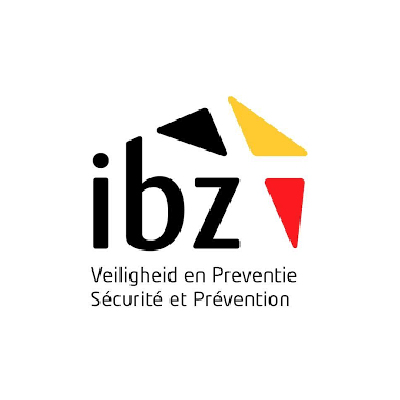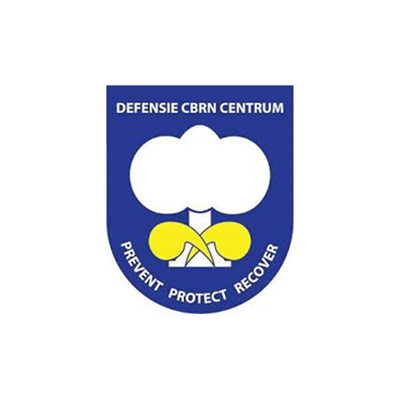Bullseye
Project Background
The Bullseye, funded by the European Union and implemented in 2019 – 2022, aims to enhance the protection of public spaces and other soft targets addressing the issue of security of CBRN materials and agents in line with the EU Action Plan, with the focus on Chemical (C) and Biological (B) threats. The project seeks to improve the knowledge and skills of pubic services, such as: police, forensic officers, fire, medical and civil protection services in EU member states on how to prevent terrorist attacks using CBRN agents and explosives by improving detection capabilities, and developing proper mitigate & respond procedures and practices in case of an emerging CBRN attack. The knowledge and experience of the military services will be used to enforce the ‘civil’ procedures.
Project Activities
The project consists of the following activities:
• First, the gap analysis concerning the existing procedures and equipment identifies chemical (C) and Biological (B) threats harmonized procedures and other useful tools currently in place.
• Next, expert meetings are hold to exchange knowledge and procedures with well-chosen CBRN experts from varied first responders civil services and armed forces, to test and improve existing procedures accordingly to the gap analysis conclusions.
• Identified procedures and tools will be checked and validated in separate monotrainings in form of workshops and trainings per each group of first responders (regular police, SWAT units, EOD teams, fire fighters and civil protection, medical emergency services, CBRN police teams, fire fighters CBRN units, DVI and forensics) based on different procedures to be implemented during the terrorist attack or immediately after the attack.
• The identified procedures in particular civil services groups will be finally tested and evaluated in cross-sectoral exercise involving all the groups. The results of the cross-sectoral exercise will be complied into Lesson Learnt document.
• Taken the lessons-learnt into account of these trainings and exercise, the procedures and tools will be fine-tuned, adapted and validated. Finally, a train the trainer course will be developed that can be used for all first responders, DVI and forensic officers of the EU countries,
• Furthermore the Bullseye-project will further develop the EU-Regional dog detection training and certification centre of excellence, in order to be able to train new detection capabilities.
Role of ICCSS
ICCSS was one of the authors of the programme, which gives priority to chemical safety and preparedness of services responding to chemical and biological threats (Chem-bio threats and emergencies). As a world leader in chemical safety and security, ICCSS brings to the project Consortium, its experience and expertise in the domain of chemical and ecological safety and security. ICCSS has broad experience in project development and implementation.
Bullseye benefits from ICCSS integrated approach to chemical and environmental vulnerability. ICCSS experts support the implementation of procedures and best practices for response and civil protection services. ICCSS will also ensure that Bullseye's experience is widely promoted and used in other projects and that the capacity of response services in other regions and continents is strengthened. In this way ICCSS promotes in practice its mission: operationalize and internationalize existing best practices and capacity building.
Project Milestones
• April, 8th, 2019, Warsaw, Poland - Kick-off with a First meeting of the Steering Group, followed by a meeting of the team involved in Work Package 3;
• July, 27-28th, 2019, Edinburgh, Scotland - Bullseye expert meeting
The participants discussed about the concept of the required an optimal interaction between the first responders and experts during the workshops in 2020 and the methodology of the Gap Analysis.
• November, 18-19th, Brussel, Belgium – Second meeting of the Steering Group of Working Package 3
• February, 17-21st, Warsaw, Poland – First Workshop for first line responders (Non-specialist police, emergency medical services, fire fighters and civil protection)
Upcoming Project Milestones:
• September, 14-18th, Bratislava, Slovakia – Second Workshop for second line responders (Military/defense and specialist police)
• October, Madrid, Spain – Third Workshop for third line responders (DVI/forensics and laboratories)
• November, Brussel, Belgium – Fourth Workshop - Multiagency workshop (Selection of practitioners from all disciplines)
• Lessons Learnt meeting, presenting findings of the final Workshop and Way Forward
Project objectives
Priorities
• Improving the protection of public spaces and other soft targets in line with the EU Action Plan to improve the protection of public spaces;
• Addressing the issue of security of CBRN materials and agents in line with the EU Action Plan to Strengthen CBRN Security.
Objectives
• The general objective of the project is to reinforce the European resilience against CBRN threats in terms of prevention, preparedness and response, recovery and foster cooperation at the EU-level in this matter.
• The project will further improve the knowledge and skills of police and forensic officers as well as fire, medical and civil protection services in all EU member states on how to properly respond to terrorist attacks using CBRN materials with explosives. This will be achieved by exchanging knowledge and best practices and work on the harmonization of procedures.
• The project will generate a common European understanding, knowledge standards, procedures & training on how to handle a CBRN-incidents from the point of view of first responders as well as forensic and DVI personnel; it will be far more easier to provide assistance between member states in case of a CBRN-incident.
• The project’s aim in the long term is to guarantee the same level of professionalism and a standard response among all first responders across Europe. In that way the same level of professionalism will be guaranteed. This will noticeable increase the overall security as well as the general sense of security in the European Union.
Why it is needed?
In the last couple of years the European Union was the victim of several terrorist attacks. Although CBRN material has not yet been used during large scale attacks on European sole, there are some clear indications that terrorists try to acquire such materials and are developing the knowledge and capacity to use them.
Nowadays the first responders of the EU countries use different procedures. There is a need to harmonize the different procedures on Chemical (C) and Biological (B) threats through a gap analysis concerning the existing procedures and equipment, and further verify them, in practice, as well as internally in particular group of service involved, as well as in intersectoral inclusive exercise, which will show-case compatibility of the particular procedures on the common ground. Concerning the response, it’s of capital importance to respond in a proper and adequate manner to the hazards associated with CBRN. Besides different first response agencies (SWAT units, EOD teams, CBRN police teams, fire fighters, civil protection, medical services.), forensic personnel as well as DVI-units faces huge challenges to intervene and investigate the contaminated crime scene and the treatment of contaminated dead bodies and pieces of evidence.
Why is it unique?
There are four unique characteristics:
In principle, exercises/workshops on response capacity to terrorist attacks are designed to focus only on selected groups of responders, rarely on all of them. Such an approach leads to limited insight in the processes and interactions taking place internally and between different groups of responders, limiting the ability to identify incompatibilities of the procedures applied by the particular groups.
The project’s unique added value is its comprehensive approach: the first, the second and the third line practitioners take part in the project. At first, the three above-mentioned groups participate separately in dedicated workshops in order to test procedures per group of practitioners. The fourth and the final workshop will bring together the results of the previous workshops in a multi-agency workshop to test the draft of the procedures on their interoperability in a tabletop exercise.
The project will lead to the harmonization of procedures (best practices), which will help to create common European approach on how to handle a CBRN-incidents.
Furthermore, the project collects high-level expertise and best practices from both military and civil services.
With regard to prevention, the Bullseye project intends to further extend the EU-Regional dog training centre of excellence and certification to detection of body worn explosives.
Project Outcomes
The following project outcomes shall be achieved:
• Focus on the improvement of detection capabilities of CBRN agents and explosives which can be used to spread CBRN-agents. In the long term there will be a focus on the sensitization of police forensics, medical services and laboratories towards increasing the security of CBRN materials and products as well as explosives.
• Improved knowledge and skills of how to better detect explosives by explosive detection dogs, the Bullseye-project will further develop the EU-Regional dog detection training and certification centre of excellence.
• Developed response in a proper and adequate way, taking into account the hazards associated with CBRNe attacks – as there are many challenges and questions to be answered – to raise awareness and exchange knowledge and best practices amongst first responders, forensic & DVI personnel.
• Mapping of the existing procedures and equipment of the defined categories with regard to how to handle Chemical and Biological attacks. Procedures of the armed forces will also be taken into account. On the basis of the mapping study a gap analysis will be carried out. This gap analysis will focus on the comparison of the different needs of the intervening agencies and authorities with regard to prevention, preparedness, intervention and recovery.
• The proposal for harmonized procedures on preparedness, mitigation and response on Chemical and Biological incidents/attacks, as nowadays the national management structure to handle CBRN-situations differ from one EU Member state to the other.
• Finally, a curriculum for Train the Trainer course for all the seven defined categories of first responders will be developed and presented to all relevant partners and representatives of EU member states. The Train the Trainer course can swiftly be implemented within the European member states in order to generate the largest possible European impact.
Expected Results
As result of the project, there will be:
• Increased cross-sectoral preparedness of EU Member States' agencies and authorities to terrorist attack against public spaces. This will be achieved by trainings, exercises and establishment of regional law enforcement training facilities, providing comprehensive training programmes for law enforcement/security authorities in protection of public spaces and other soft targets. The training programmes should be closely aligned with the Commission's ongoing activities in this area;
• Development of cross-border, cross-sectoral cooperation and coordination mechanisms for first responders in the immediate response to terrorist;
• Increased cross-sectoral preparedness of EU Member States' agencies and authorities to CBRN incidents in the context of the EU CBRN preparedness and response programme.
Project Partners









